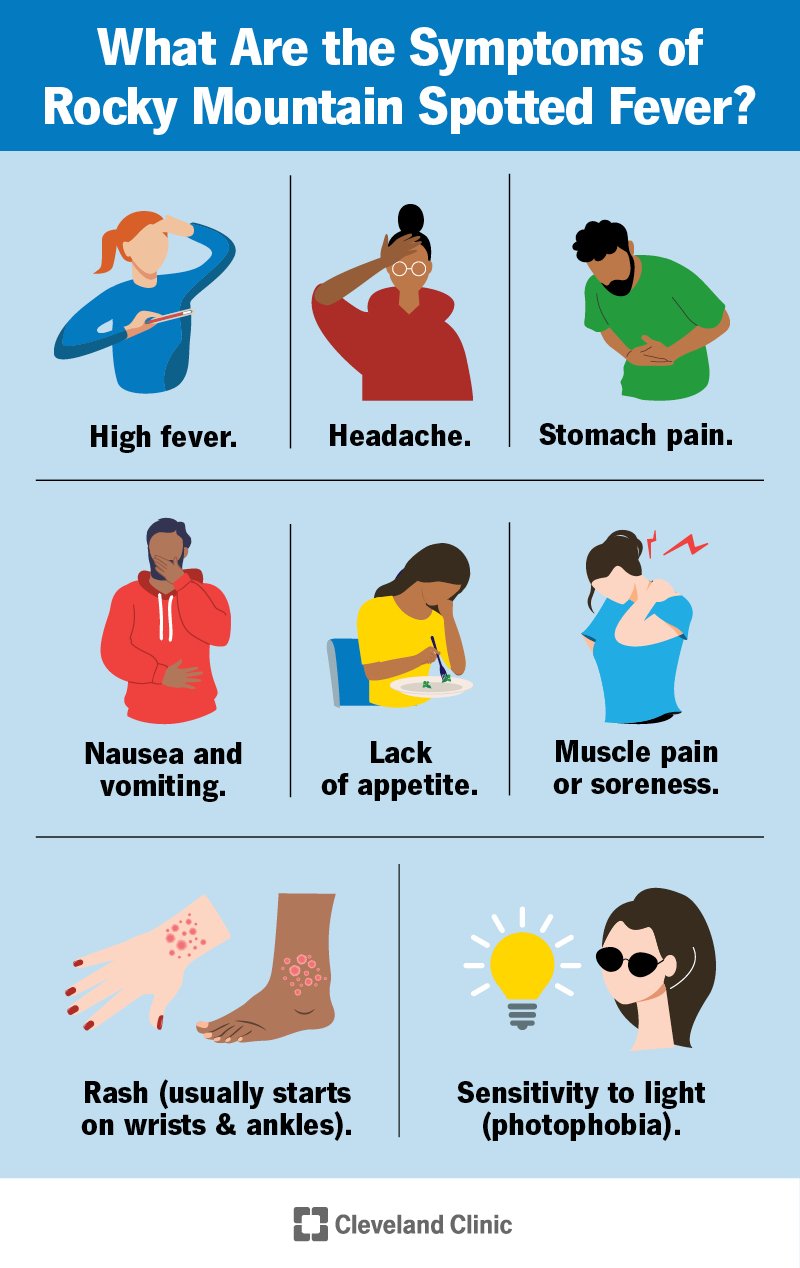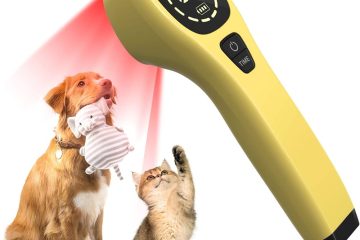Lyme disease and Rocky Mountain spotted fever are diseases transmitted by ticks. These tick-borne illnesses can cause various symptoms and complications.
We will explore the characteristics, symptoms, treatments, and preventive measures for both Lyme disease and Rocky Mountain spotted fever. Understanding these diseases is crucial for individuals living in tick-prone areas or those who frequently engage in outdoor activities. Being informed about the risks and taking appropriate precautions can help reduce the chances of contracting these tick-borne illnesses.
Furthermore, early detection and prompt medical intervention are essential for managing these diseases effectively. So, let’s delve into the details of Lyme disease and Rocky Mountain spotted fever to gain a comprehensive understanding of these potentially serious health concerns.
Contents
What Are Ticks?
Ticks are small arachnids that can carry and transmit diseases such as Lyme Disease and Rocky Mountain Spotted Fever. These diseases can have serious consequences for human health.
What are ticks? Ticks are small, blood-sucking parasites that belong to the arachnid family. They are commonly found in grassy and wooded areas, as well as on animals such as deer, rodents, and birds. These tiny creatures can transmit various diseases to humans through their bites, making it important to understand their types and life cycles to effectively prevent and manage their risks.
Types Of Ticks
Ticks come in different types and species, each with its unique characteristics and habitats. Here are some of the most common types of ticks that you may encounter:
- Blacklegged ticks (Ixodes scapularis): Also known as deer ticks, blacklegged ticks are primarily found in the northeastern and midwestern regions of the United States. They are known carriers of Lyme disease, which can cause joint pain, fatigue, and other debilitating symptoms if left untreated.
- American dog ticks (Dermacentor variabilis): These ticks are mainly found in grassy and wooded areas across the eastern and central parts of the country. While they can transmit Rocky Mountain spotted fever, their bites are more commonly associated with causing tick paralysis.
- Lone Star ticks (Amblyomma americanum): Named after the distinctive white spot on the backs of adult females, lone star ticks are prevalent in the southeastern and eastern states. They are known carriers of various diseases, including ehrlichiosis and southern tick-associated rash illness (STARI).
Life Cycle Of Ticks
Understanding the life cycle of ticks is crucial in effectively preventing and controlling their population. Ticks have a four-stage life cycle: egg, larva, nymph, and adult.
- Egg: Female ticks lay thousands of eggs in the environment, typically in leaf litter or dense vegetation.
- Larva: Once the eggs hatch, the larvae emerge and seek their first blood meal from a host, often a small animal. After feeding, they drop off the host and molt into the nymph stage.
- Nymph: Nymphs are larger than larvae and continue seeking a blood meal from another host, often a larger mammal or bird. After feeding, they drop off and molt into the adult stage.
- Adult: Once reach adulthood, ticks seek another blood meal from a larger host, such as humans or deer. After feeding, the females lay eggs, continuing the life cycle.
By understanding the types of ticks and their life cycle, you can take necessary precautions to prevent tick bites and the diseases they can transmit. Regularly checking for ticks after spending time outdoors, wearing protective clothing, and using insect repellents can minimize the risk of encountering these tiny yet troublesome parasites. Remember, early detection and proper treatment are essential for managing tick-borne diseases effectively. Stay vigilant and take the necessary steps to protect yourself and your loved ones.

Credit: www.nps.gov
What Is Lyme Disease?
Lyme disease is a well-known tick-borne illness, along with Rocky Mountain spotted fever and other diseases transmitted by ticks. These diseases can have serious health consequences and it is important to be aware of the symptoms and prevention measures.
Causes And Symptoms
Lorem ipsum dolor sit amet, consectetur adipiscing elit. Lyme disease is caused by the bacterium Borrelia burgdorferi, which is transmitted to humans through the bite of infected ticks. The ticks most commonly associated with the transmission of Lyme disease are called black-legged ticks, also known as deer ticks. These ticks are tiny, about the size of a poppy seed, and are usually found in wooded and grassy areas.
Lyme disease symptoms can vary from person to person, but they typically appear in three stages. In the early stage, within 3 to 30 days after a tick bite, a red rash known as erythema migrans may appear. This rash often resembles a bull’s eye, with a red center surrounded by a lighter ring. Some people may also experience flu-like symptoms, such as fatigue, fever, headache, muscle and joint aches, and swollen lymph nodes.
In the second stage, which can occur weeks to months after the initial infection, the bacteria may spread to other parts of the body, resulting in more severe symptoms. These can include severe fatigue, multiple rashes, joint pain and swelling, facial paralysis (Bell’s palsy), and even heart problems.
In the third stage, if left untreated, Lyme disease can lead to long-term complications affecting the joints, nervous system, and heart. These complications can cause chronic joint inflammation, memory problems, difficulty concentrating, sleep disturbances, and heart rhythm abnormalities.
Diagnosis And Treatment
Diagnosing Lyme disease can be challenging as its symptoms can mimic those of other illnesses. Medical professionals often rely on a combination of factors, including a physical examination, medical history, and laboratory tests to confirm a diagnosis.
One of the most common laboratory tests used to detect Lyme disease is the enzyme immunoassay (EIA) or the immunoblot test. These tests look for antibodies produced by the body in response to the presence of the Borrelia burgdorferi bacteria. If these tests come back positive or inconclusive, further testing, such as a polymerase chain reaction (PCR) test or a western blot test, may be done to confirm the diagnosis.
Early diagnosis and treatment are crucial in preventing long-term complications. Lyme disease is typically treated with antibiotics, such as doxycycline, amoxicillin, or cefuroxime. The choice of antibiotic and duration of treatment may vary depending on the stage of the disease and the individual’s overall health. Most people recover fully with appropriate treatment, but some may experience lingering symptoms even after treatment, a condition known as post-treatment Lyme disease syndrome (PTLDS).
What Is Rocky Mountain Spotted Fever?
Rocky Mountain Spotted Fever (RMSF) is a serious tick-borne disease caused by the bacterium Rickettsia rickettsii. It is primarily endemic to North, Central, and South America, with cases reported in the Rocky Mountain states of the United States. RMSF is characterized by its flu-like symptoms and the presence of skin rash, making it crucial to understand its causes, symptoms, diagnosis, and treatment.
Causes And Symptoms
RMSF is primarily caused by the bite of an infected tick, commonly the American dog tick and the brown dog tick. These ticks are typically found in grassy or wooded areas and can transmit the bacterium through their saliva when they bite.
The symptoms of RMSF usually appear between 2 to 14 days after a tick bite. It begins with a sudden onset of high fever, severe headache, muscle aches, and fatigue. These symptoms are often followed by a characteristic rash, which starts on the wrists and ankles before spreading to other parts of the body. Petechial rash, which looks like small red spots, is a common indicator of RMSF.
Diagnosis And Treatment
Early diagnosis and treatment are essential for effectively managing RMSF. Healthcare providers may perform various diagnostic tests, including blood tests, to detect the presence of Rickettsia rickettsii bacteria or antibodies produced by the immune system in response to the infection.
The treatment of RMSF usually involves the prompt administration of antibiotics, such as doxycycline, to eliminate the bacterium. It is important to start treatment as soon as possible to prevent potential complications.
In conclusion, RMSF is a serious tick-borne disease caused by the bacterium Rickettsia rickettsii. It is crucial to be aware of its causes, symptoms, and methods of diagnosis and treatment. Taking preventative measures such as wearing protective clothing and using insect repellents can help reduce the risk of tick bites and the transmission of RMSF.

Credit: www.splootvets.com
Other Tick-borne Diseases
Tick-borne diseases, such as Lyme Disease and Rocky Mountain Spotted Fever, can cause serious health issues. It is important to recognize the symptoms and seek prompt treatment to prevent complications. Stay vigilant and protect yourself from these potential illnesses.
Anaplasmosis
Anaplasmosis is another tick-borne disease that can have serious health consequences if not treated promptly. It is caused by the bacterium Anaplasma phagocytophilum, transmitted to humans through the bite of infected black-legged ticks, commonly known as deer ticks.
Babesiosis
Babesiosis is a tick-borne illness caused by microscopic parasites of the Babesia family. Similar to malaria, it infects red blood cells and can lead to severe complications, especially in individuals with weakened immune systems. The primary culprit in the transmission of babesiosis is typically the black-legged tick.
Ehrlichiosis
Ehrlichiosis, caused by the bacteria Ehrlichia chaffeensis, is a tick-borne disease that can affect both humans and animals. The Lone Star tick is the primary carrier of this bacterial infection. It can cause flu-like symptoms, such as fever, muscle aches, and fatigue. If left untreated, ehrlichiosis can result in more severe complications, including organ damage. It is crucial to be aware of these other tick-borne diseases, just like Lyme disease and Rocky Mountain spotted fever. Protecting yourself from tick bites, especially during peak tick seasons, is essential. Take necessary precautions such as wearing long-sleeved clothing, using tick repellents with DEET, and regularly checking for ticks after spending time outdoors. Remember, swift diagnosis and timely treatment are key to preventing complications associated with tick-borne diseases. If you experience symptoms like fever, headache, fatigue, or rash after a tick bite, consult a healthcare professional. Stay informed and take steps to safeguard your health against these potentially harmful diseases.

Credit: www.purdue.edu
Frequently Asked Questions Of Diseases From Ticks Lyme Disease Rocky Mountain Spotted Fever More
Which Is Worse Rocky Mountain Spotted Fever Or Lyme Disease?
Rocky Mountain spotted fever and Lyme disease are both serious tick-borne illnesses, but Lyme disease is generally more prevalent and can lead to long-term complications if left untreated. However, each disease has its own symptoms and treatment options, so it’s important to consult a healthcare professional for proper diagnosis and care.
What Are The 2 Diseases Most Commonly Linked To A Bite From A Tick?
Lyme disease and Rocky Mountain spotted fever are the two most common diseases transmitted by tick bites.
What Are The 4 Tick-borne Diseases?
The 4 tick-borne diseases are Lyme disease, Rocky Mountain spotted fever, babesiosis, and anaplasmosis.
Conclusion
Tick-borne diseases such as Lyme disease and Rocky Mountain spotted fever pose significant health risks. It is crucial to be aware of these diseases and take preventive measures to avoid tick bites. Regular self-checks, wearing protective clothing, and using insect repellents can help reduce the chances of contracting these illnesses.
If symptoms occur after a tick bite, seeking medical advice immediately is essential for early detection and treatment. Stay informed, stay safe!





Modern Talking был немецким дуэтом, сформированным в 1984 году. Он стал одним из самых ярких представителей евродиско и популярен благодаря своему неповторимому звучанию. Лучшие песни включают “You’re My Heart, You’re My Soul”, “Brother Louie”, “Cheri, Cheri Lady” и “Geronimo’s Cadillac”. Их музыка оставила неизгладимый след в истории поп-музыки, захватывая слушателей своими заразительными мелодиями и запоминающимися текстами. Modern Talking продолжает быть популярным и в наши дни, оставаясь одним из символов эпохи диско. Музыка 2024 года слушать онлайн и скачать бесплатно mp3.
Our digital performance has been significantly enhanced thanks to MAFA’s instrumental services. | https://bit.ly/web-tasarim-kurumsal
Lice Toptan Tekstil | The customer service at RENE Wholesale Textile and Clothing Solutions is exemplary. They’re always prompt and helpful.
Sarah Hyland Hair | Your words have a way of resonating with the deepest parts of my soul, awakening truths I never knew existed.
With these pleated blinds, we can easily adjust the lighting in our rooms to create the perfect ambiance. Such a game-changer! | Zip Perde Sinop
Ulus Mahallesi, Gebze Halı Yıkama | PENTA’nın yıkama çözümleriyle ilgili bu yazı, işletmemin temizlik ve hijyen konusundaki ihtiyaçlarını nasıl karşılayabileceğimi daha iyi anlamama yardımcı oldu. Harika bir kaynak!